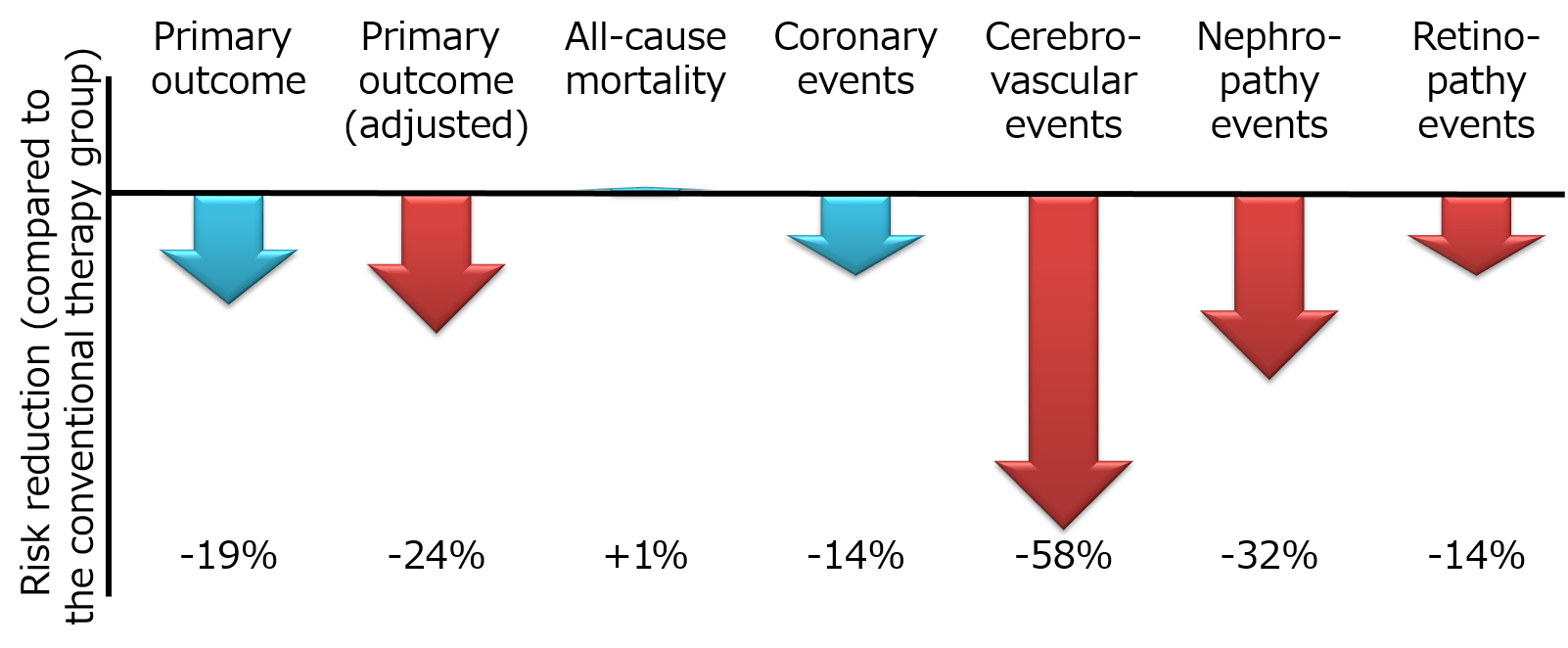Study results
Patients participating in J-DOIT3

BMI: body mass index, BP: blood pressure, LDL: low-density lipoprotein.
Participating patients received either of the two therapies for 8.5 years.

Risk factors were generally well controlled in both groups.

Arrow heads: mean during the intervention.
BMI remained almost constant during the intervention in both groups.
The target LDL cholesterol in those with history of coronary artery disease was 100mg/dL in the conventional therapy group and 70mg/dL in the intensive therapy group.
Patients had no major problems in safety in both groups.
-
Hypoglycaemia was three times more frequent in the intensive therapy group than in the conventional therapy group, but only a small portion of them experienced severe hypoglycaemia, all of whom recovered after glucose infusion or a brief hospital stay.
-
Oedema and laboratory findings (ALT, CPK) were also more frequent in the intensive therapy group, but they were not severe in most of the cases.
Severe hypoglycaemia: hypoglycaemia requiring someone else's assistance or admission to hospital.
The physician in charge asked patients about hypoglycaemia and symtoms of heart failure at each visit.
All the patients in the intensive therapy group received a blood glucose meter for self-monitoring, and the physician in charge took the results into account for better glycaemic control.
Comparison with a former clinical trial in Japan implied that even the current standard care reduced diabetic complications.

Intensive therapy for stricter targets than the current standard care further reduced diabetic complications.

Primary outcome: myocardial infarction, stroke, revascularization, or death. The result was adjusted for baseline risk factors, including smoking status.
Coronary events: myocardial infarction, coronary revascularization; cerebrovascular events: stroke, cerebral revascularization.
Red arrows: statistically significant.


